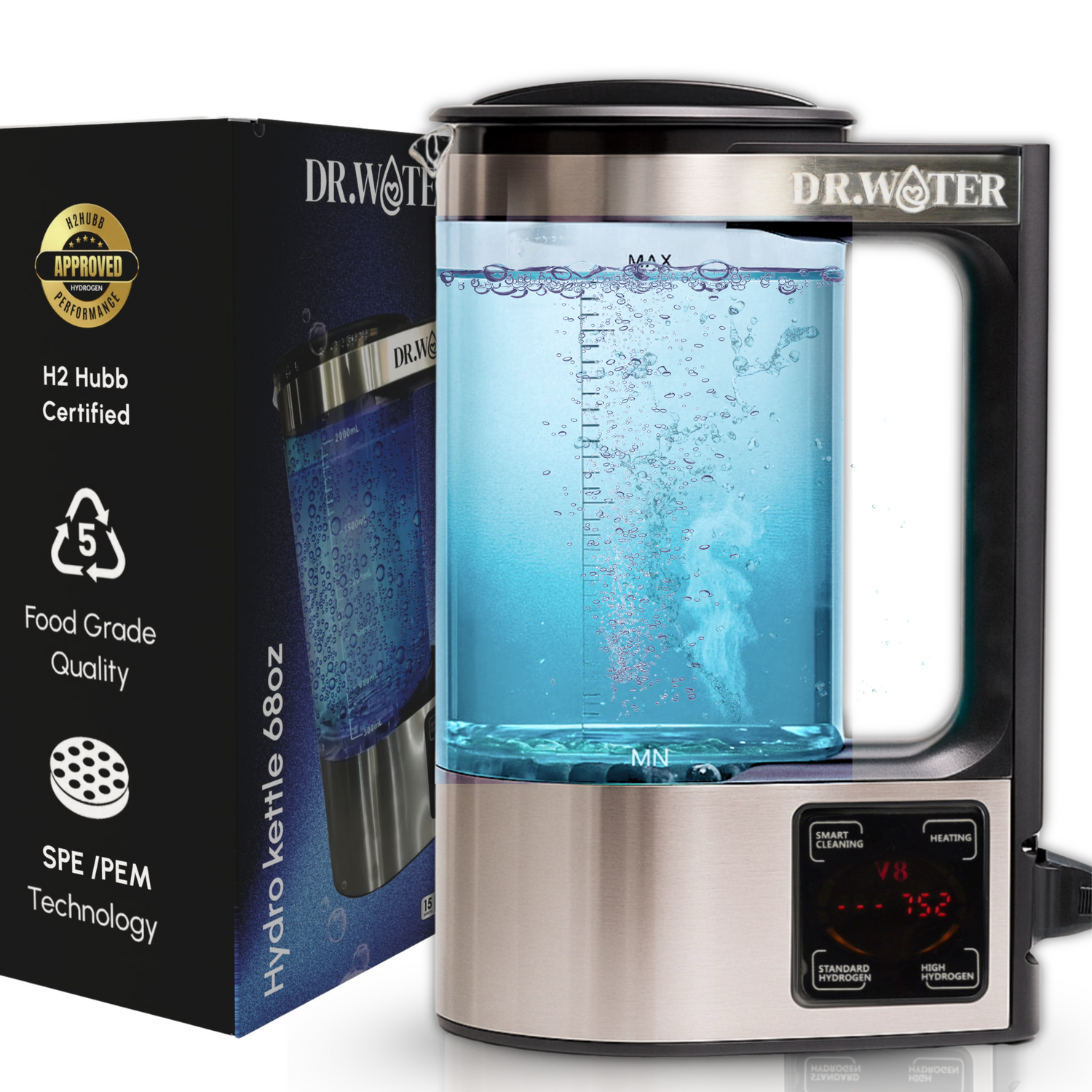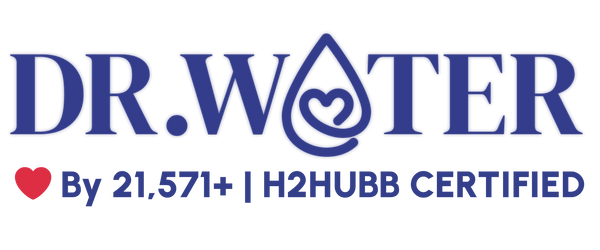
Electric Kettle vs Boiling Water Tap: Which Should You Choose?
Share
Summary
|
Choosing between an electric kettle and a boiling water tap is not just about speed or convenience. It's about how you use hot water daily, how precise you need the temperature, and how efficient you want your setup to be.
In this guide, we compare electric kettles and boiling water taps across speed, temperature control, energy use, safety, and long-term convenience. We’ll also break down why kettle water temperature celsius is more than just a number, as it’s a key to better taste, safety, and smarter appliance use.
Understanding the Basics of Electric Kettles and Boiling Water Tap
- Electric Kettles heat water using a metal coil at the base. They’re compact, fast, and easy to move around the kitchen. Many modern models come with temperature presets for tea, coffee, or baby formula.
- Boiling Water Taps are installed at the kitchen sink and deliver hot water almost instantly. They use an under-sink tank that keeps water heated throughout the day. These taps are ideal for busy kitchens or workplaces with constant hot water needs.
Now, let’s explore some key comparison points and features of electric kettles and boiling water taps.
Key Differences Between Electric Kettles and Boiling Water Taps
Electric kettles and boiling water taps each come with their own set of features and suit different types of lifestyles. Your decision should depend on how often you need hot water, whether you want temperature control, and how much energy you're willing to use for daily convenience. Here’s a detailed list of features you should consider.
1. Heating Speed and Daily Convenience
- Electric kettles typically take between 2 to 4 minutes to boil a liter of water. They're ideal for small households or individuals making drinks or quick meals. They are portable and can be moved around anywhere with an electric plug point.
- Boiling water taps provide water at around 98°C instantly. This is a time-saver if you're making tea, cleaning, or cooking often. However, they're fixed installations and not suited for renters or people with limited space.
2. Kettle Water Temperature Celsius: Why It Matters
Not everything needs boiling water. The right kettle water temperature celsius makes a big difference. In fact, many kettles come with preset temperatures for artisanal teas and coffees to help you brew the perfect cup:
- Green tea: 70–80°C to avoid bitterness
- Coffee: 90–96°C for proper extraction
- Boiling water (100°C): ideal for sterilizing, but not for everyday drinks
Electric kettles with temperature control let you choose exactly what you need.
3. Energy Use and Standby Power
- Electric kettles only heat the amount of water you need, making them more energy-efficient for light daily use, and some even have quick-boil or keep-warm functions to save time.
- Boiling water taps keep a tank of water hot all day, which uses more electricity over time unless equipped with energy-saving modes or insulation.
4. Safety and Child-Friendliness
- Electric kettles can be moved easily but pose risks around children, especially from steam or spills if placed near edges. However, many modern electric kettles come with automatic shut-off and cool-to-touch exteriors.
- Boiling water taps often come with safety features like child-locks, controlled flow, and insulated nozzles. They’re a safer choice in homes with kids or elderly users.
5. Maintenance and Cleaning Frequency
- Electric kettles need regular descaling, usually once every week or two, especially in hard water areas. Using filtered water helps reduce buildup. You should also avoid reboiling the same water frequently.
- Boiling water taps require less frequent maintenance but more technical servicing. The under-sink tank might need an annual check, and filters or internal parts may need professional cleaning.
6. How Temperature Affects Taste and Use
The effect of water temperature on brews and ideal temperature on should brew their beverages has been a point of discussion for many. So much so, there are specialized kettles in the market to cater these needs. Here’s how the right kettle water temperature celsius makes a real difference:
- Too hot? You’ll scorch tea leaves or coffee grounds
- Too cold? You won’t get proper extraction or full flavor
- Cooking? Foods like oats or soup mixes need heat, but not boiling
Electric kettles with adjustable temperature controls shine here. You can set 85°C for white tea, 60°C for baby formula, or 50°C for general warm water use. Boiling taps can’t match that level of control.
Here’s an at-a-glance comparison of electric kettles and boiling water tap:
|
Feature |
Electric Kettle |
Boiling Water Tap |
|
Heating Time |
Heats water in about 3-5 minutes. |
Provides instantly hot water on demand. |
|
Energy Efficiency |
More energy-efficient for boiling smaller amounts. |
Continuous heating can consume more energy over time. |
|
Capacity |
Typically holds 1-1.5 liters of water. |
Can provide an unlimited supply of hot water. |
|
Temperature Control |
Many models offer variable temperature settings. |
Generally provides water at a fixed high temperature. |
|
Installation |
Portable, no installation required. |
Requires professional installation for plumbing. |
|
Cost |
Relatively affordable, depending on features. |
Higher initial cost due to installation and plumbing. |
|
Maintenance |
Requires periodic descaling for mineral buildup. |
Low maintenance but may require regular servicing. |
|
Convenience |
Can be used anywhere with an electrical outlet. |
Requires a permanent location in the kitchen, offering more convenience for frequent use. |
|
Water Quality |
May affect taste with repeated use or scaling. |
Offers consistent hot water but may depend on filtration systems for water quality. |
|
Portability |
Highly portable for various locations. |
Fixed in place, not portable. |
Now, let’s discuss how you can decide which suits your needs the best.
Ideal Use Cases to Help You Decide Which Suits You Best
The best hot water appliance often depends on your living setup, kitchen habits, and how often you need hot water throughout the day. Some people prioritize compact size and portability, while others need fast access to large amounts of hot water with no waiting time.
This table gives a quick overview of where each option shines, based on typical household or workplace needs:
While both options serve their purpose well, your daily routine and volume of use will help determine which setup offers better value in the long run.
Dr. Water HydroPitcher: A Smart Option for Health-Conscious Users
If you're more focused on health and hydration, the Dr. Water HydroPitcher offers a unique alternative. It heats water gently and enriches it with hydrogen for added antioxidant support.
Key Features:
- Heats water up to 60°C for safe, regular drinking
- Generates hydrogen using safe SPE and PEM tech
- Portable, USB-C powered, and BPA-free
- Made from borosilicate glass for safety and durability
- Self-cleaning function and dishwasher-safe design
This is ideal for those who drink warm water all day or want a gentle heating option with wellness benefits. You get fresh, warm hydrogen water that comes with many scientifically-backed health benefits like antioxidant properties and enhanced endurance.
Conclusion
Both electric kettles and boiling water taps have pros and cons. But understanding kettle water temperature celsius gives you a helping hand in making the right choice.
If convenience is key, taps are faster. If control matters more, choose a kettle. If your focus is health, hydration, and antioxidant-rich water, the Dr. Water HydroPitcher offers something entirely different. With the right setup, you can improve your daily routine without compromising on taste, safety, or energy use.
Explore the Dr. Water range today!
FAQs
Q: How does energy efficiency compare between an electric kettle and a boiling water tap?
A: Electric kettles are typically more energy-efficient for boiling small amounts of water, as they heat water quickly and only when needed. A boiling water tap, however, keeps water heated constantly, consuming energy even when it's not in use. Depending on your usage, the kettle might save more in the long run.
Q: Which option offers better control over water temperature?
A: Electric kettles often have variable temperature settings, allowing you to heat water to the precise temperature needed for different tasks, like brewing tea or coffee. Boiling water taps generally provide water at a fixed high temperature, offering less flexibility in controlling the heat for specific needs.
Q: Can a boiling water tap improve long-term convenience in a busy kitchen?
A: While electric kettles are portable and ideal for quick boils, a boiling water tap offers consistent hot water without the need to wait. It’s perfect for high-demand kitchens, as it provides an endless supply of hot water, reducing the need to constantly refill and reboil a kettle.

